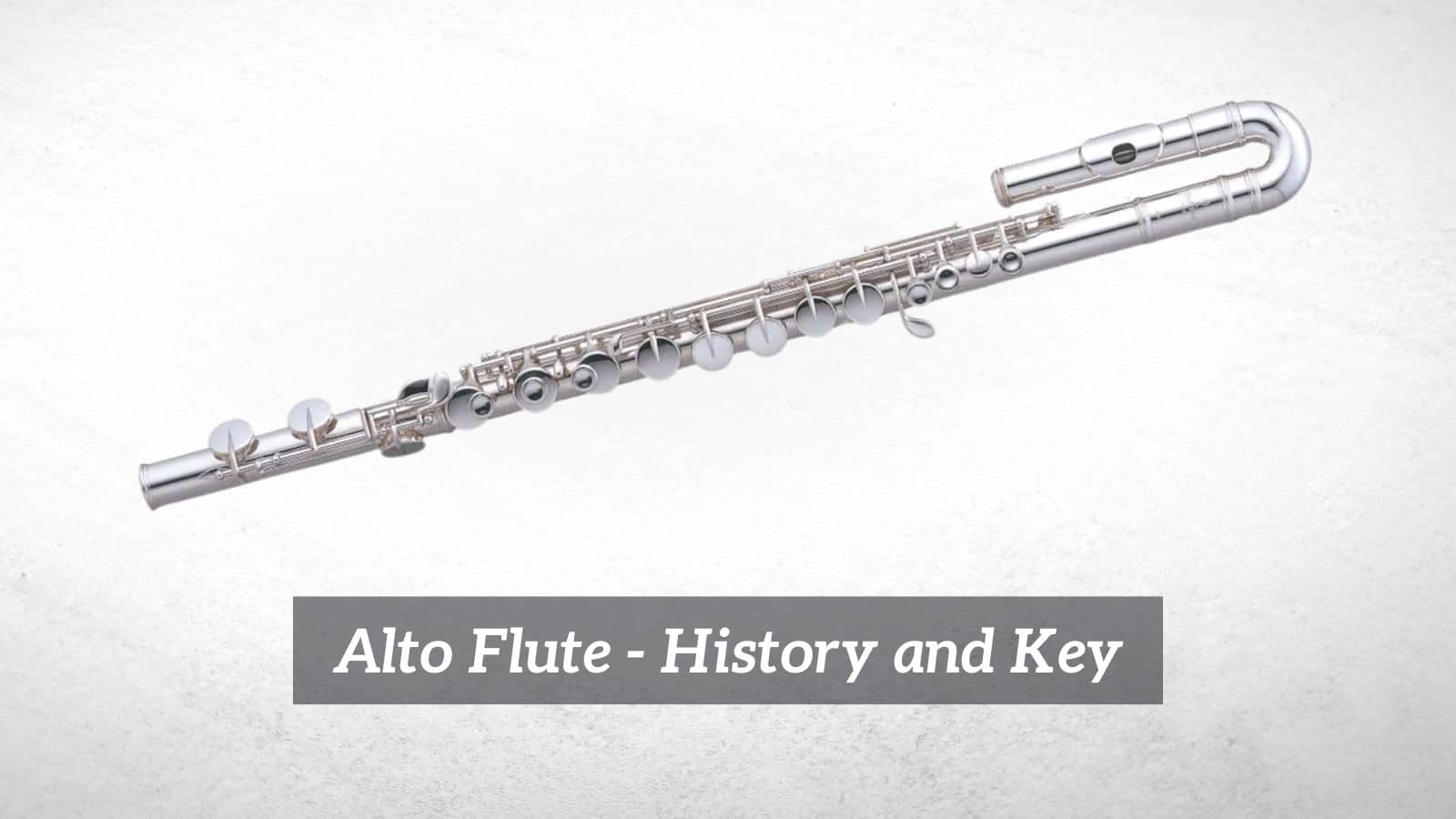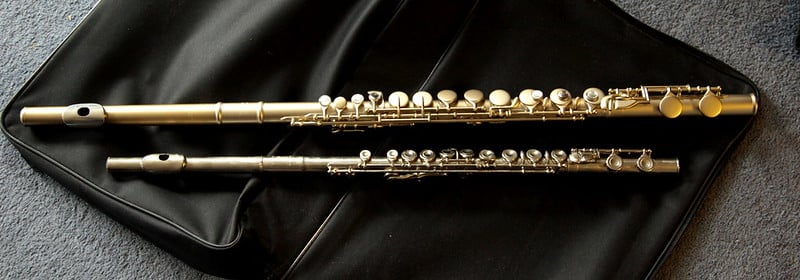
Most people are familiar with the standard concert flute, a popular instrument that is often heard in orchestral, band, chamber, and solo performances of classical music as well as in jazz and popular music.
Some people even recognize the piccolo, a smaller version of the flute that is pitched an octave higher. However, many people are unaware that larger versions of the flute exist.
The most notable of these instruments is the alto flute, which is appreciated by flute enthusiasts for its deeper, captivating tone.
The Alto Flute
The history of the alto flute
Flutes have been an essential part of music-making since prehistoric times, but the modern alto flute is a relatively new instrument.
Large flutes were in existence prior to the alto flute, but these instruments often were difficult to play and fell to the wayside in favor of higher pitched instruments. We owe the existence of the modern alto flute to Theodore Boehm, who was an inventor and scientist in the nineteenth century.
In 1847, he produced the Boehm flute, which was a version of the transverse flute that had improved sound quality and technique. Though it has continued to be modernized, the Boehm system is still the foundation for modern flutes.
After his work on the standard flute, Boehm expanded his system to the larger flute in the 1850s. Boehm was able to remedy many of the issues found with early versions of the large flute.
He added keys and levers that made the instrument easier to play despite its larger size, and ensured that the proportions of the instrument were in direct relation to the standard flute.
As a result, the alto flute could be an important instrument in its own right, and had an equally powerful sound to the flute. In fact, the instrument was so well-made that it has needed very little improvement to its original form over the years.
The instrument even ended up becoming Boehm’s favorite in the flute family.
What key is the alto flute in?
The alto flute is pitched in G, in contrast to the other instruments in the flute family, which are pitched in C. This means that the instrument sounds a perfect fourth lower than written: if one plays a G on the alto flute, it will sound like a C.
The range of the instrument spans from G3 to G6 (the octave below middle C on the piano to two octaves above it). Its lower pitch comes as a result of its larger size; it is about 200 millimeters longer in length and seven millimeters longer in diameter than the typical concert flute.
Playing the alto flute requires more air than the smaller flutes, and its keys are larger and slightly more spread out. However, the basic concept of sound production and the fingerings remain the same, so most flute players can easily pick up the alto flute.
Some alto flute players use a curved headjoint so they don’t have to strain their arms when playing.
What does an alto flute sound like?
Alto flutes sound similar to flutes, but with a lower pitch and generally deeper and more mellow sound. The lower register is naturally stronger and fuller than the upper register, which sometimes has trouble projecting.
Like concert flutes, alto flutes are primarily made of metal, the type of which will vary the sound. A student alto flute might be primarily made from silver-plated nickel; more advanced alto flutes will be made from silver or gold or a combination of both.
A silver alto flute will have a brighter sound while a gold instrument will be darker and richer.
Where can I hear an alto flute?
Alto flutes are certainly less commonly played than its higher counterparts, but they still play an important role in classical music. There are famous alto flute solos in major orchestral works such as Stravinsky’s Rite of Spring, Holst’s The Planets, and Ravel’s Daphnis et Chloe.
Recently, composers have discovered the magic of the alto flute, and it has been appearing more in modern music. There are now several works available for solo alto flute, and it is often incorporated into contemporary works for chamber or large ensembles.
Alto flutes are also important in flute choirs, which typically consist of piccolos, concert flutes, alto flutes, and bass flutes. Often these ensembles will transcribe works for string orchestras or quartets; in these cases, the alto flute fills in the role of the viola.
Film composers have also made use of the instrument in famous soundtracks for movies such as Lord of the Rings.
Is it worth it to buy an alto flute?
If you are a flute player, you may be wondering if owning an alto flute would be useful. Most advanced and professional flute players own piccolos, the more common auxiliary instrument in the flute family.
It is unlikely that any ensemble you join as a flute player would require you to own an alto flute.
Many music schools and professional ensembles own an alto flute that they loan to a member of the flute section on the rare occasion it is needed, and it would not be terribly difficult to rent one for a short period otherwise.
There are very few people who specialize on alto flute; it is more of an extra skill than a primary instrument.
However, if you have a particular interest in contemporary music, having an alto flute might serve you well. As mentioned previously, it is becoming more popular in modern music.
If you have an alto flute you can practice on and use in smaller-scale performances put on by up-and-coming composers, it may give you extra opportunities.
If you have a particular interest in the instrument and its unique timbre, there’s no harm in renting or buying one for fun. They tend to be less expensive than a high-end standard flute, and it is only going to grow in popularity.

